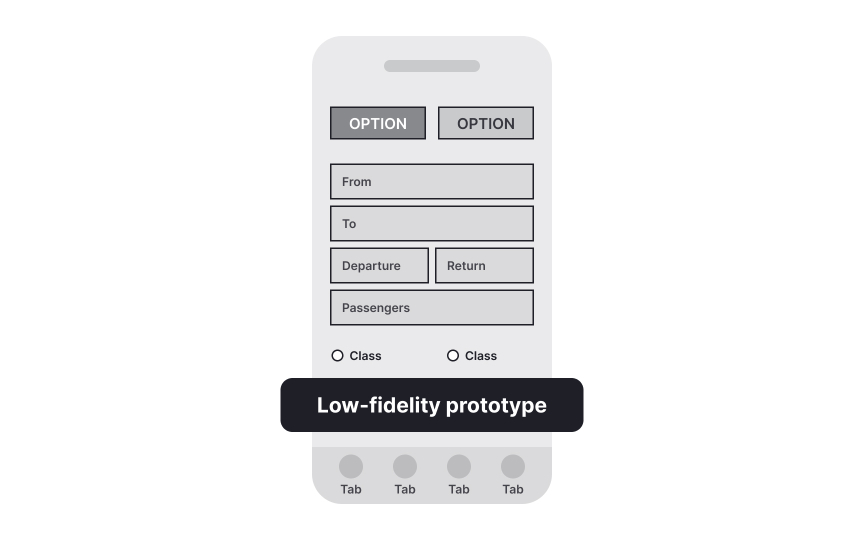Low-fidelity prototypes
Low-fidelity prototypes are simple, interactive versions of your design that focus on basic functionality and flow. These prototypes maintain minimal detail and visual design — they might be as basic as hand-drawn sketches — but include enough interactivity to test how users move through your product. They're an early-stage design tool that helps validate core user journeys and navigation patterns quickly and cheaply.
While wireframes and low-fidelity prototypes may appear similar since both focus on layout and structure, they serve different purposes. Wireframes remain static grayscale mockups with placeholder content, but low-fidelity prototypes add basic interactivity. Designers often create these prototypes by photographing hand-drawn sketches and using tools like MarvelApp, UXPin, or Figma to add hotspots — clickable areas that link screens together. This simple interactivity lets teams test navigation flows and basic functionality before investing time in detailed visual design.

